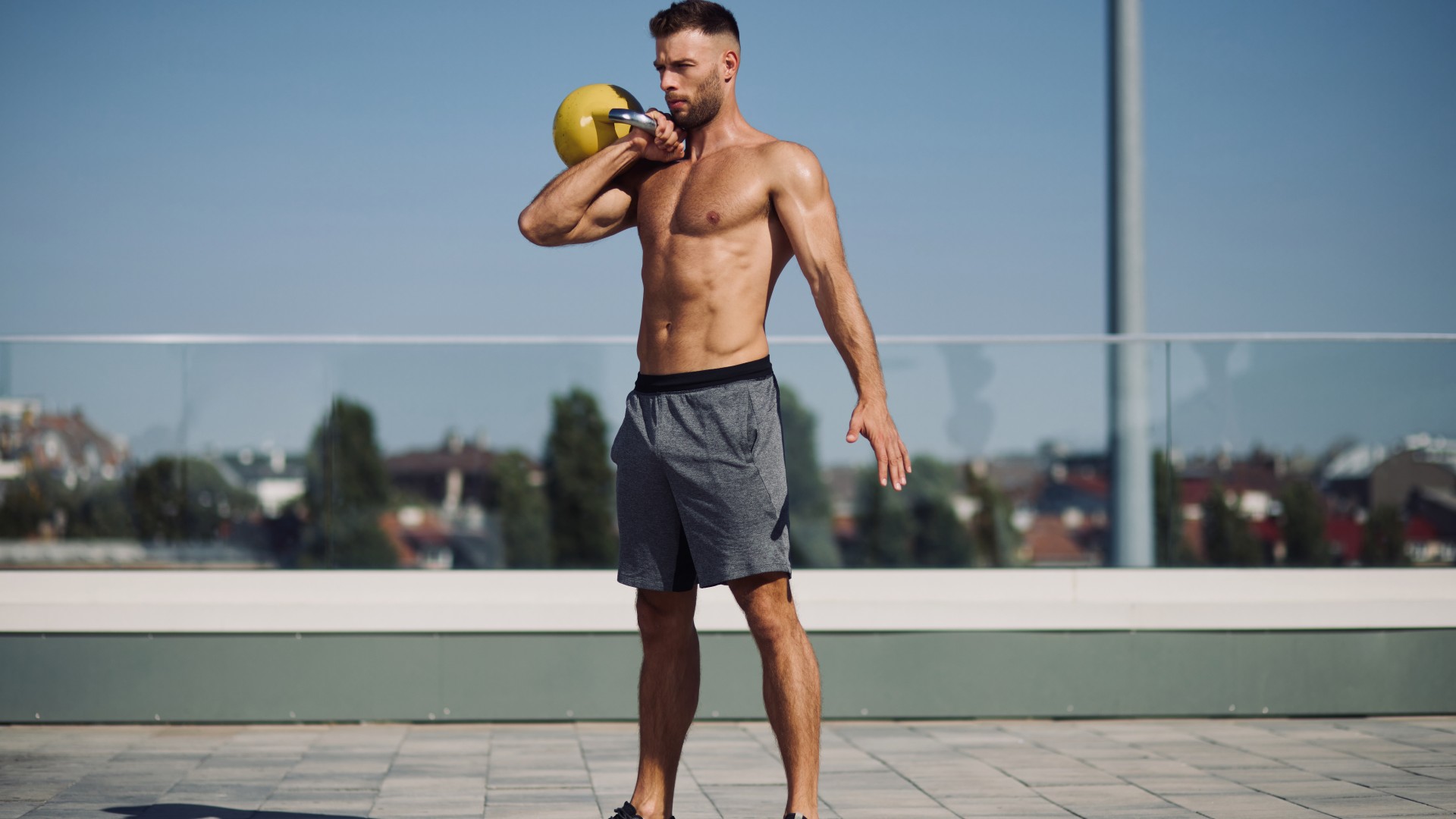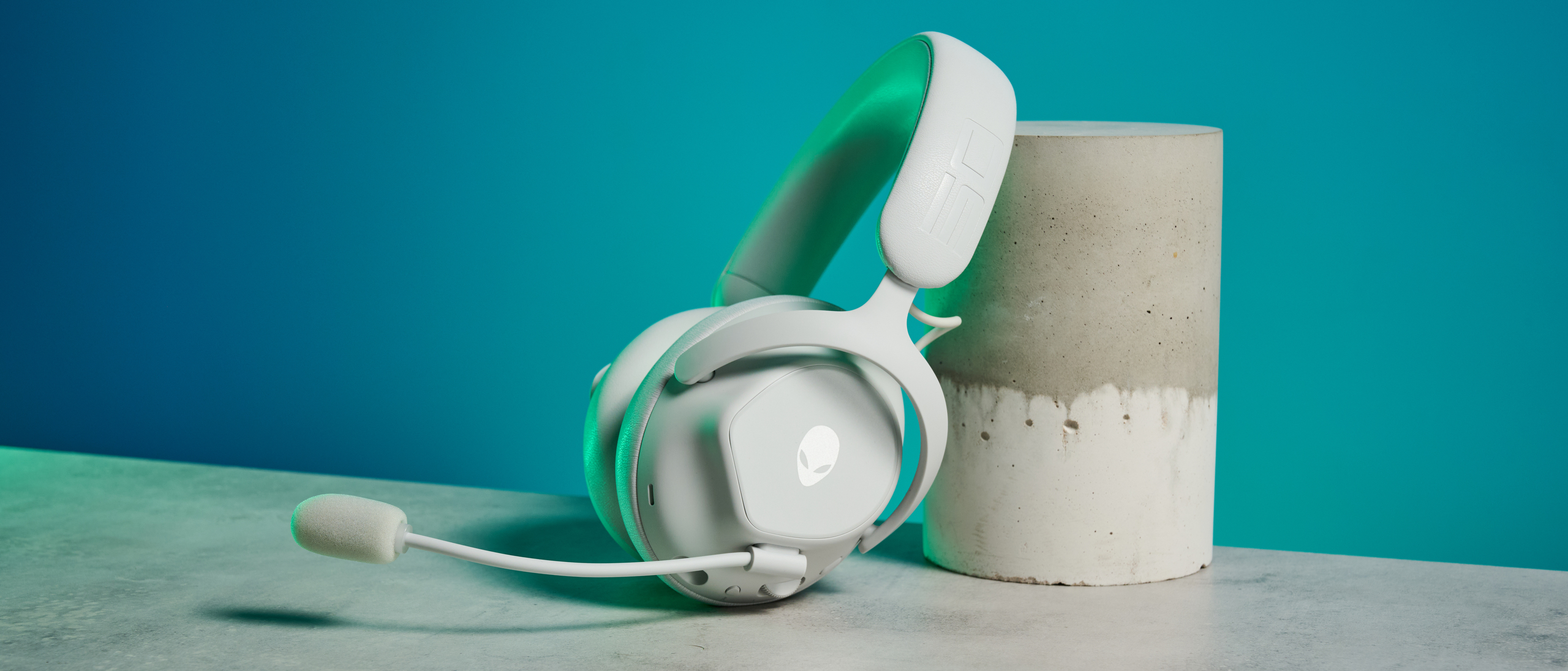
The kettlebell clean and jerk is a technical full-body move and one of the best kettlebell exercises to target your legs, glutes, hip flexors, core, shoulders, arms and back. I decided to try 50 reps a day (25 per arm) for one week to see what would happen to my body.
Depending on the equipment you choose — the best kettlebells, barbells, or dumbbells — you’ll need to learn technique from the ground up to execute the technicality of a clean and jerk properly. I rarely use kettlebells for this exercise, so I fancied leveling up, giving them a go and dropping the barbell for the week.
Here's what I learned as I took to another Tom's Guide fitness challenge.
How to do the kettlebell clean and jerk
There are things I wish I had known as a kettlebell beginner, including how to hold a kettlebell properly. If you don’t know how to grip the kettlebell before you begin the clean and jerk, you’ve already created a problem for yourself.
Here’s how to nail kettlebell clean and jerks:
Swing
- Start with one kettlebell between your feet and adopt a shoulder-width stance
- Begin with an overhand grip on the kettlebell and hinge forward at the hips with a soft bend in your knees. Engage your core
- Send the kettlebell behind you, through your legs, then drive the kettlebell upward to hip height
- Practice this variation on a one-arm kettlebell swing to ensure you can snap your hips forward and squeeze your glutes and core as the kettlebell travels upward
Clean
Get instant access to breaking news, the hottest reviews, great deals and helpful tips.
- As you drive the kettlebell up, pull the bell toward you into the front rack position
- The kettlebell should travel around your hand, not flip over the top, rotating onto the forearm and upper arm. Keep your back flat and elbow close to your ribs with your thumb next to your collarbone and pull the kettlebell round to rest in position.
Jerk
- Softly dip the hips and knees, heels down, then do a little jump and punch the kettlebell overhead, extend your arm and legs to stand and lock out the elbow
- Keep your arm close to your head and pause
- Lower the weight with control to the racked position, then reverse the motion to swing the kettlebell back through your legs
- Switch sides.
Here are the 5 best kettlebell exercises for beginners, and we explain how to clean a kettlebell and nail kettlebell swings step-by-step.
I did the kettlebell clean and jerk every day for a week — here’s what happened to my body
Here's what I learned.
My technique has drastically improved
I’ve been doing the clean and jerk with barbells and dumbbells for a while, but I haven’t steered kettlebells for a while, so my technique was a bit rusty. Having spent the first 10 reps (5 per side) practicing, I then decided to set the remaining 40 reps as an EMOM — every minute on the minute.
I lifted heavy and set a target of 8 reps (4 per side) per minute, resting for the remainder of the minute and starting my next round in the next minute, totaling 5 rounds. It kept the intensity high and made me accountable, and besides, I finished my reps in less than 10 minutes every day using the approach.
I love the rhythm
I’m a sucker for clean and jerks, clean and presses and snatches — all technique-heavy exercises, but brilliant for complexes (when you sequence exercises together back to back) and finding flow and rhythm during a workout. Once you get the technique under control, your body naturally falls into step, and it can even be quite meditative. In fact, there’s research suggesting that the meditative nature of repetitive movements can improve working memory and cognitive function in adults.
The study mentions activities such as yoga or Tai Chi, but the findings refer to repetitive movements that use movement and attention to breathing, and I found it oddly relaxing.
The DOMS got me
I opted to lift heavy for my kettlebell clean and jerks, especially as (unlike a strict press) you can use your core muscles and lower body to help drive the overhead movement — think about the dip and jump as you transition from the racked position to the jerk.
My entire body fired up, and just one exercise provided me with a full-body workout in as little as 10-15 minutes, leaving me sweating by the last round. You need to be honest about the weight you can lift, ensuring you opt for a challenge without losing your arm (an easy gauge is whether or not your last reps feel difficult). By the end of the week, I could feel muscles aching from head to toe, especially my shoulders.
My left side is noticeably weaker
I have an ongoing issue with weakness in my left shoulder. It’s crucial to use the same weight for both sides of your body when adopting unilateral (single-sided) exercises to help build balance, strengthen underused and stabilizer muscles and work muscles as evenly as possible. You’re only as strong as your weakest side, so even if you could lift 3kg heavier using your right side, refrain from doing so (note to self).
The current studies find unilateral exercises are brilliant at leveling up both sides of the body, building coordination, better function, balance and stability by recruiting the left and right sides of the body to work together. It’ll also uncover any weaknesses immediately — notably (for me) my left shoulder.
I sped up
It takes some coordination to piece together, but the clean and jerk is an explosive and powerful exercise, so you’ll need to learn to perfect each stage and fit them together with fluidity. Bringing multiple moves together creates one muscle-torching sequence of big moves, leaving no muscle group untouched.
During my practice reps, I focused on each stage of the kettlebell clean and jerk — the swing, clean, jerk and bringing them together. The cleaner and snappier my technique got, the more powerful the movement became and the quicker I could pedal my reps without losing form. Not only does the move ramp up the heart rate, but no body part gets left behind.
Do jerks build muscle?
We don't try and sell a dream at Tom's Guide. Despite taking on weekly challenges and reporting on what we learn, we won't ever claim to have sculpted a new set of abs or popping shoulder muscles after just one week.
You’ll need to adopt a consistent hypertrophy program using muscle-building techniques like progressive overload to stimulate, load and grow your muscles. Including the clean and jerk in your program could help build and strengthen muscles across your entire body, including the glutes, hips, quadriceps, hamstrings, various core muscles, arms, shoulders and back muscles like the trapezius and latissimus dorsi. But you'll need to program them consistently, keep your form tight and gradually build weight as you get stronger.
I did 50 kettlebell jerks every day for one week — here’s my verdict
I haven’t developed significantly more core, shoulder, or upper back strength within one week. But I feel more confident with the exercise, and by practicing the clean and jerk more regularly, I could definitely improve my overhead and upper body strength. My goal is to keep it up and help level out the imbalance I’m currently experiencing on my left side, alongside my regular training routine.
I don’t recommend doing this exercise every day as your body needs time to rest and recover, especially when shifting heavy weights and consistently training multiple muscle groups. If you plan to try kettlebell clean and jerks, avoid flipping the bell over your wrist during the clean and build with a light weight first. Once you feel comfortable, begin gradually increasing by 1-2kg at a time. I recommend mastering a kettlebell swing, clean and overhead press first so that it feels less daunting.
More from Tom's Guide
- The best kettlebells 2024: for weightlifting, home workouts and gym
- Forget deadlifts — 3 kettlebell exercises that build full-body muscle in just 15 minutes
- Forget kettlebell swings — it takes 3 moves and 20 minutes to sculpt muscles

Sam Hopes is a level 3 qualified trainer, a level 2 Reiki practitioner and fitness editor at Tom's Guide. She is also currently undertaking her Yoga For Athletes training course.
Sam has written for various fitness brands and websites over the years and has experience across brands at Future, such as Live Science, Fit&Well, Coach, and T3.
Having coached at fitness studios like F45 and Virgin Active and personal trained, Sam now primarily teaches outdoor bootcamps, bodyweight, calisthenics and kettlebells.
She also coaches mobility and flexibility classes several times a week and believes that true strength comes from a holistic approach to training your body.
Sam has completed two mixed doubles Hyrox competitions in London and the Netherlands and finished her first doubles attempt in 1:11.

